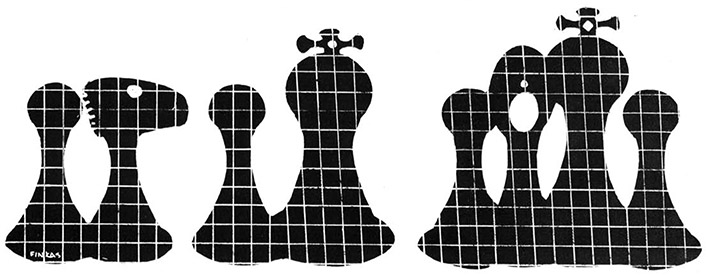
Beyond Sargon II
Scenarios For Chess
The title of this article might seem absurd for after all, how can there be scenarios in chess.
Actually there are many interesting ways to play chess that are not in accordance with the rules of the United States Chess Federation. The setups may be varied, new pieces introduced or even the basic objectives of the game altered.
This article contains chess variants which I have used with Sargon II (by Dan & Kathe Spracken, Hayden Software). All these variants involve new set-ups as adding pieces with new powers is impossible without changing the program.

POSITION — The most straightforward option is to take a position from a chess book or column. In choosing a position, consider that Sargon is strongest in the middle game and weakest in the end game. You should also keep in mind that positions which are unbalanced in material (e.g. 2 R’s for a Q) are often the most exciting.
END-GAME PLACEMENT — Take a small number of pieces (the same for each side). Sargon takes White. Place the pieces randomly on the first 4 ranks of each side. If a piece starts in a threatened square (or if K’s adjacent) choose a new location. I have used a K+2P and K+R+P.
16 PAWN — Remove White’s Queen. In compensation, he receives extra Pawns at B3, C3, C4, D4, E4 F4, F3, G3. Though by the standard count of material, Black is up “1 pawn” — this position favors White. The extra pawns are played as pieces that have already moved.
PEASANT REVOLT — White starts with his K at E1 and his eight P’s. but no other pieces. Black has his K at E8. a Pat E7 and N’s at B8. C8. F8, and G8. As with previous variant, Black’s advantage in the count masks White’s strong positional advantage.
THREE PAWN (or Szen’s Problem) — White has his K at E1 and P’s at F2, G2 and H2. Black has his K at D8 and pawns at A7, B7 and C7.
RANDOMIZED — Set up each player’s back rank at random. If the B’s start on squares of the same color, one is switched with an adjacent piece.
B&N REVERSED — Switch your B’s and your N’s starting locations. (This was actually done in a tournament in 1880!)
BATTLE CHESS — Set up each side’s pieces according to the following rules:
1) All men must be set up on the first three ranks.
2) Pawns may not start on the back rank. If they start on the third, place as having moved.
3) Bishops must be on squares of opposite color.
Choose the computer’s side randomly after setup. (Better yet come up with list of starting positions and choose two at random.) White’s first move may not be a capture! If Sargon trys it, put the piece back and you make the first move (which may not be a capture).
REBELLIOUS ROYALTY — Place White’s K at E8 and his Q at D8. Place black’s K at E1 and his queen at DII. All other pieces start in their normal locations.
TWIN CHESS — White starts with his N’s at A3 and H3; as at D1 and E1 and K’s at Cl and F1 (deploy K’s as having moved). Black starts symmetrically. Either K may be checkmated. If both K’s are checked simultaneously, they must both be put out of check or they are considered checkmated.
ODDS — If you are consistently better (or worse ) than the program, you might want to give (or receive) odds. This is done by removing and moving pieces at the start as follows:
1. The odds-giver receives Black and removes his P at F7:
2. The odds-giver receives Black, removes his P at F7 and forfeits his first move;
3. The odds-giver receives White and removes his N at B1;
4. The odds-giver receives White and removes his R at A1 (but has his Pat A2 displaced at A3);
5. The odds-giver receives Black, removes his Rat A8, his P at F7:
6. The odds-giver receives White and removes any two of his B’s or N’s;
7. The odds-giver receives White and removes his R at Al, and N at BI (displacing his Pat A2 to A3);
8. The odds-giver removes his Q at D1.

As one of the classic games of all time, chess has entertained and challenged us for many years. I hope these computer chess scenarios add to your enjoyment of the game.
Source Page


